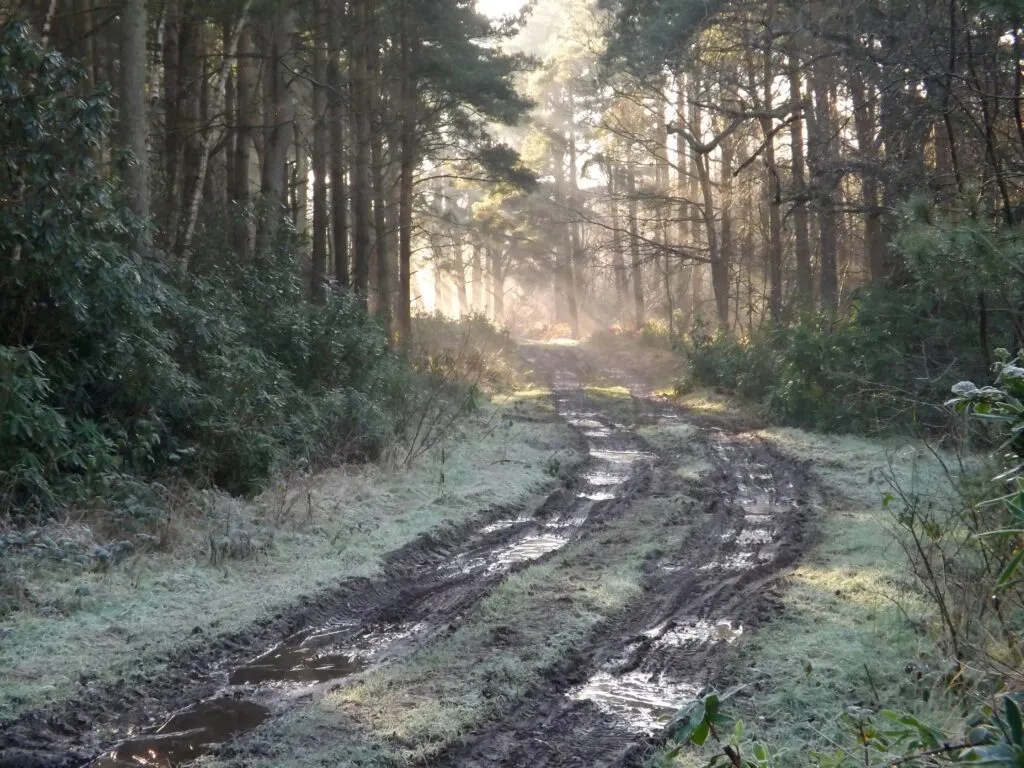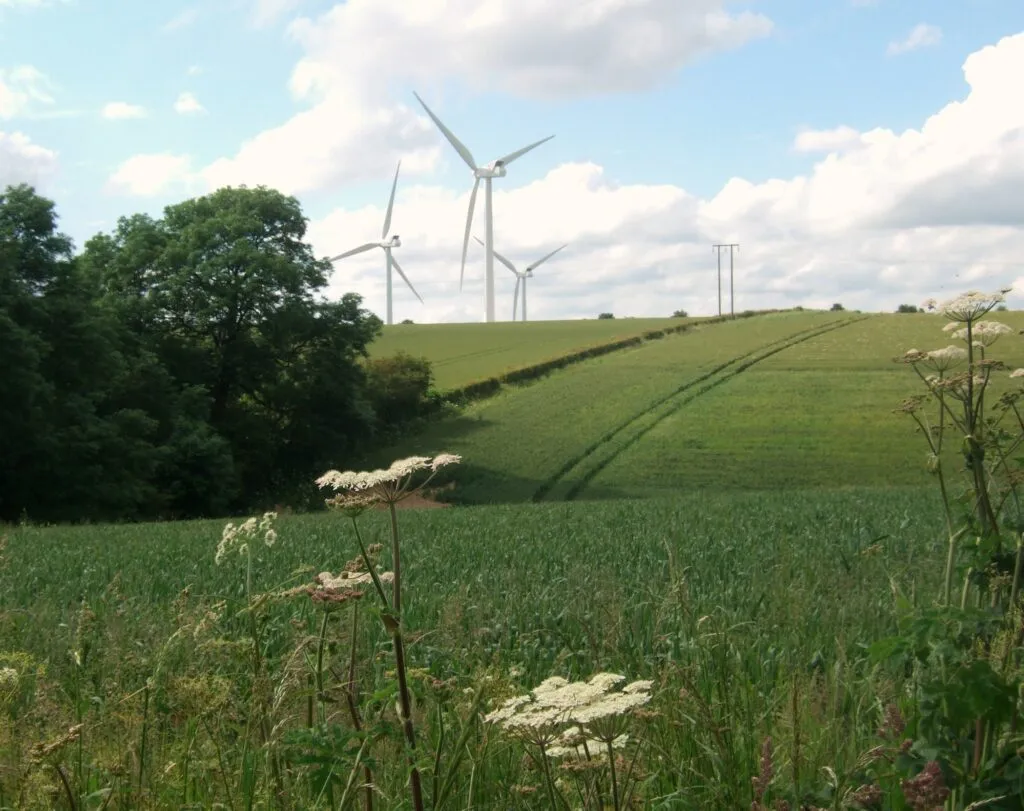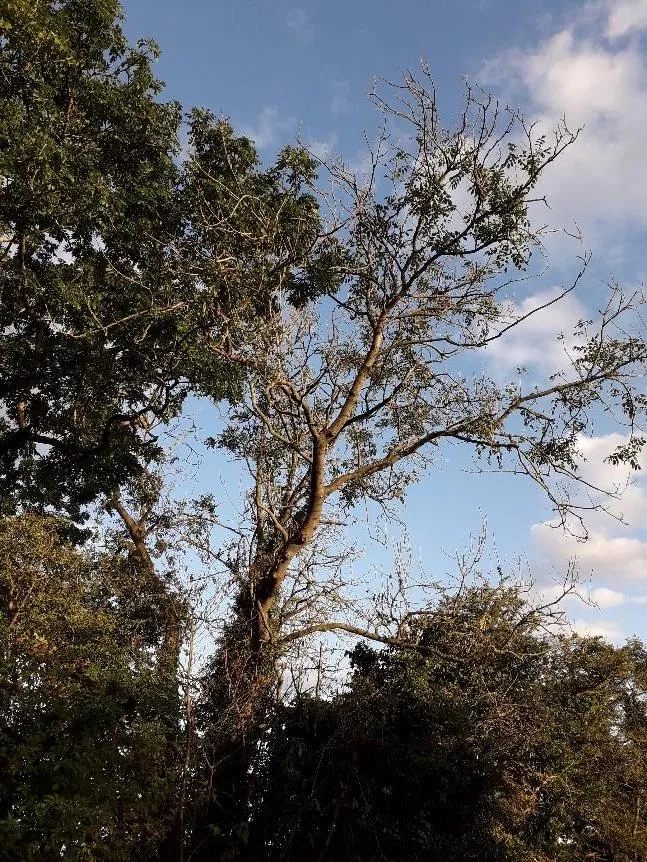 Yorkshire Wolds Heritage Trust
Yorkshire Wolds Heritage Trust Spring 2023 Newsletter

The west facing Wold escarpment from North Cave to Market Weighton reveals one of the underlying rock types of the Wolds – a hard band of impermeable Oxford clay forming a marked step in the scarp slope. At Houghton this is covered in a couple of metres of fine windblown sand from the time when the Plain of York was an ephemeral lake. Scots Pine likes sunshine and tolerates poor soil conditions better than most and fine specimens are found along the rides through Houghton Woods (above).
The Humber Forest
You may recall HEY Woods (Hull and East Yorkshire Woods). Relaunched last year as the ‘Humber Forest’ intended to include all the trees and hedges of Hull and the East Riding and to connect with the White Rose Forest, Manchester City of Trees and Mersey Forest to form the Northern Forest, aiming to plant 50 million trees by 2043 around Liverpool, Manchester, Leeds, Sheffield and Hull. Advice and funding for tree planting, hedge creation, protection, maintenance, fencing, gates etc will be provided to anyone within the Humber Forest boundaries. Importantly for landowners, your schemes will not mean an obligation to open your property to public access: the results of your efforts to improve the environment will be appreciated from miles away. Contact for further information: humber.forest@eastriding.gov.uk 01482 393726
Alternative Energy

Just when we all thought fracking for shale gas had been summarily dismissed as an energy source, difficulties in the country’s normal supply indirectly due to the Ukraine situation caused a sudden U-turn in Liz Truss’s short lived administration. Rishi Sunak has said that he is not in favour of fracking, but clearly the possibility of a relook into the development of a native resource becomes more attractive if the alternative is people freezing to death in unheated homes. Realistically it could not be developed in time if this winter proves to be severe, so what are the alternatives?
Well, actually, the situation is pretty bleak (excuse the pun).
Better home insulation would be the most sensible. All our older houses leak heat via the outer fabric, via ill-fitting windows and doors and via necessary but unmanaged ventilation. Even hot water from the dishwasher, the clothes washer, baths and showers goes down the drain before the heat is recovered from it. Modern houses with better insulation tend to have greater expanses of glass which is lovely to have but each square metre of standard double glazing loses 15 times as much heat as a well-insulated solid wall. Even high spec triple glazing is 4½ times worse than a solid wall. Of course it would not be practical to set about upgrading the insulation of every house straight away. This should have been done long ago. So where is the energy to come from to keep our homes and workplaces warm?
Renewables now provide about 1/3 of UK power. Land based wind turbines on the Wolds would offer an attraction due to altitude (stronger and more persistent winds). A wind farm producing enough power for 1000 homes would need about 130 acres but normal agricultural operations could be carried out beneath them apart from about 5 acres for tower bases, access roads and infrastructure. Solar panel farms would need about 20 acres for the same power output but the land between the rows of panels is possibly only suitable for grazing. ‘Green’ or ‘blue’ hydrogen gas from the electrolysis of water from excess electricity produced by the above two methods or nuclear could provide energy storage. None of these exciting ideas could be initiated overnight – several years at least and, importantly, do we want good food producing land and views taken up by fields of towering turbines or solar panels? While we are at it, let’s not forget about all the other contenders for space that nibble away at the limited green acres (housing, workplaces, road, rail, forestry, leisure space, coastal erosion).
The short term solution is probably going to be imported liquefied natural gas and a return to thermal coal (also mainly imported) for the few operational solid fuel power stations we have not yet decommissioned. It won’t be cheap. And what chance for our commitment to net zero carbon emissions one wonders?
Ashes To Ashes
Contributed by John Killingbeck who will be leading a tree walk – one of our next summer events

We all know of the threat to Ash trees in the British landscape by Ash Dieback disease, which is proving rapidly fatal. It is estimated that the majority of trees will die leaving perhaps 5% that might be naturally resistant. Affects, locally, are variable but in the worst cases, entire swathes of trees are failing and it is too early to judge levels of resistance. Given that Ash is the quintessential native landscape tree of the Wolds, its loss is of particular concern here.
So, what will an Ash free Wolds landscape look like and what trees might take its place?
Left to their own devices, the tree most likely to replace Ash would be Sycamore. Aside from its legendary powers of reproduction, it grows well in the same conditions as Ash. Although much reviled, Sycamore can be a magnificent landscape tree (eg Birdsall Estate) and the prodigious aphid populations it harbours provide a substantial food supply for wildlife. It is cheerfully leafy for much longer than Ash, too, though its heavier canopy and leaf litter is less favourable to ground flora.
Few other trees would beat the Sycamore in a replacement race but if planted, several natives could be given a head start. Wild Cherry, Field Maple, Yew and Oak would then be capable of self-regeneration once established. So too would exotic Norway Maple. Hornbeam and Lime might also be considered though unlikely to self-regenerate. Each of these has a proven Wolds track record. Beech is already widely established on the Wolds and is perhaps the most obvious choice for creating a magnificent landscape particularly along horizons and tops. Although not strictly native to the Wolds, it is eminently suited although its track record for self-regeneration is patchy and mostly will need to be planted.
Another surprising contender is native Wych Elm. Once an important Wolds landscape tree it was massacred by Dutch Elm Disease decades ago. However a few big ones still survive locally and young self-regenerated trees are frequent but remain threatened by disease so cannot be relied upon to replace Ash entirely.
Yorkshire ‘Food Hero’ From The Wolds
Tom Mellor from Hunmanby Grange where his family have farmed since 1945, has recently been named Yorkshire Food Hero at the Deliciously Yorkshire Taste Awards. The farm is of course well known as the home of the Wold Top Brewery, but with his friend David Thompson the team at the brewery have branched out again to start the county’s first whiskey distillery. Yorkshire Wolds Heritage Trust members who visited Gill Mellor’s beautiful garden there some years ago will be saddened to know that Gill died in 2020 but the garden continues to attract visitors. The story behind the Mellors’ move to Wold Newton is very interesting (from Alex and Kate Balchin (Directors) regular post with permission):
The original Mellors (our lineage anyway) were publicans and blacksmiths, in a village called Triangle (near Halifax) on top of the Pennines. They ran the ‘Triangle Inn’ an 18th century coaching inn (now Grade II listed) from which the village is said to have taken its name.
Please bear with us going forwards, there are a lot of Thomas’ in this tale! (We’re an imaginative bunch when it comes to naming sons!)
In 1916, when publican Thomas Mellor (1) of the Triangle Inn, Triangle, West Yorkshire, passed away unexpectedly, it shattered the dreams of his eldest son Tom (2), an industrial blacksmith, who’d had every intention of moving to Canada to find his fortune. Instead, he found himself as the landlord of a coaching house and with the weight of the family on his shoulders.
Fortunately for him, the Liberal MP for Sowerby hired a governess to look after this two children. This governess was a Swiss lady, Albertine, who, found herself stuck in West Yorkshire as war broke out across Europe.
Also fortunately for Tom (2), his importance and need as the area blacksmith excluded him from active service.
Let’s pretend Albertine and Tom’s eyes met across the crowded saloon bar of the pub, they married and had five children: four girls and one boy (Thomas).
Thomas (3) the son struggled with a weak heart though and after consultations, it was advised that the smoke and smog of industrial West Yorkshire and Halifax wasn’t good for him – they should find some cleaner air. As the Second World War drew to a close Tom (2) and Albertine began to look for properties in more rural, ‘cleaner’ parts of the county. In 1945, they found Hunmanby Grange, a reasonably large farm and house close to the coast under big skies and far away from any factories. And the family flourished.
In the mid-50s Thomas (3) met Shirley from the local village and after courting at a few local dances they married and moved into the farm too – soon Tom (4) and Josette arrived.
Both Thomas (3) and Tom (4) were progressive farmers – always looking for ways to improve crop and animal yields and to keep the farm moving forwards. In 1987, Thomas (3) gave Tom (4) the reins and allowed him to take over the farm management and direction.
Tom (4) attended Wye Agricultural College in the early 80’s and it was there that he met Gill, who was studying horticulture. They married in 1983 and had two daughters (we had to break the mould at some point!) Kate and Jenni.
Since the late 80’s Tom and Gill worked constantly to secure the future of the farm as a livelihood for not only their own family but for the next generations also. We’ve grown potatoes, kept pigs and large scale free range chickens for eggs, invested in wind energy and finally in 2003 started Wold Top Brewery. Alongside this we have continuously grown wheat and barley and maintained the biodiversity of our land as much as we can through stewardship schemes and more.
Sewerby Hall
The zoo is open again after being closed following local cases of avian flu. There is still a monitoring and surveillance zone between Hornsea and Hull. Planning permission has been granted for enlargement of the zoo.
An exciting new children’s play area will be ready by the end of March.
Contact: (01262) 673769 sewerby.hall@eastriding.gov.uk
New Books
Colin Speakman’s Latest Book: “Yorkshire: Ancient Nation, Future Province”
Colin is a successful Yorkshire Author who produced his “Around the Yorkshire Wolds” in 2011 and “Yorkshire Wolds: A Journey of Discovery” in 2017, with a second edition published in June this year. He has recently published what might be considered a more political work. “Ancient Nation” is all about the origin and contributing cultures of Yorkshire with a hefty chunk about Hull and the East Riding.
David And Susan Neave’s Latest Book: “East Yorkshire And York – A Heritage Shell Guide”
A sumptuously illustrated gazetteer by Beverley’s well known architectural historians with concise information about the county and nine town walks (York, Hull and Beverley).
Proposed Events For 2023
Organised events:
Thursday 16th March AGM at Tranby Croft, near Hull – Site of the Royal baccarat scandal.
Thursday 22nd June Country house and garden visit: Boynton Hall, near Bridlington. A private guided tour by the owner Mrs Sally Marriott
Friday 23rd September Sledmere lecture: Speaker to be confirmed.
Planned events:
Tree walk with John Killingbeck – An opportunity to get more acquainted with some of the larger and older inhabitants of the Wolds
Canal boat trip: From North Frodingham to Struncheon Hill Lock and back in chartered boat with guides full of folklore and knowledge about the canal and canal life.
Platform 66 – Tapestry Display 1066 Battle of Stamford Bridge in the former railway station
YWHT Members Contributions
2020 and 2021 were cancelled years and 2022 was a bit grim with the aftermath of Covid. Some businesses will never re-open and we have heard of charities that have been unable to continue. The UNESCO Geopark proposals and the Area of Outstanding Natural Beauty applications mean that there is much that we can help with and we would welcome views from members.